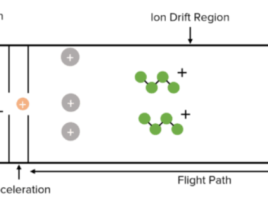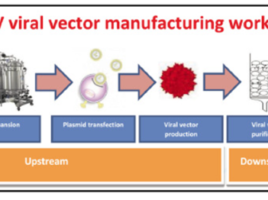
Applications of Chromatography
The identification, measurement, and purification of a specific analyte or chemical are the primary goals of the Chromatographic process. Examinations can be done both quantitatively and qualitatively. HPLC is just one aspect and can be used in the following applications (1): 
- Purifying water
- Impurity detection in the pharmaceutical sectors
- Trace component pre-concentration
- Ligand-exchange
- Ion-exchange of proteins
- Analysis of oligosaccharides and carbohydrates at high pH
- Pharmaceutical Industry
The laws and processes to give assurance that the appropriate production and the purity of medicines are delivered came along with the widespread production of pharmaceuticals (2). One of the most popular techniques for confirming drug purity is HPLC (2).
2. Clinical Diagnosis
Dopamine and other catecholamines, including epinephrine, are crucial for a variety of biological processes (2). It is possible to diagnose conditions including Parkinson’s disease, heart disease, and muscular dystrophy by analysing their precursors and metabolites (2). However, because of how common these molecules are in the human body, it is important to be careful when analysing them and drawing inferences regarding patient health (2). HPLC is an excellent choice for such diagnostic purposes since it has a higher degree of molecular separation and comparison capability than other techniques (2). Because of its efficiency, stability of the column, and ability to separate a variety of chemicals, reversed-phase HPLC (RP-HPLC) is one of the more often used techniques (2).
2.1. Medical Research
HPLC is frequently used to analyse biological markers and metabolites from individuals with existing diagnoses to aid in the search for a direct diagnosis (1). For instance, researchers can utilise certain metabolites as biomarkers to help with early detection of Parkinson’s or heart disease (1).
3. Food Production
Chemical use in agricultural and food production has significantly increased during the past few decades (1). This can be problematic in many situations since chemical residues on products might endanger consumers’ health (1). Fortunately, HPLC may also be used to recognise and measure pesticides, as well as preservatives, synthetic flavours, and colours (1).
Our Work
Our lab manager, Dr. Carolyn Hyde has over 30 years of experience, therefore she has extensive knowledge about HPLC and method development.
Currently we use our HPLC to analyse metabolites such as Indoxyl Sulphate; sugars for gut malabsorption in humans and for purifying proteins and DNA.
We are currently working with the RVC to develop a method to be used in the determination of gut issues in horses without the need to anesthetise the animals.
Services
We also offer HPLC Training Courses. Please click here to read more about it.
References
- G.P. Thomas. High Performance Liquid Chromatography (HPLC) – Methods, Benefits, Applications. (Internet) (Cited on 2022 Jul) Available from https://www.azom.com/article.aspx?ArticleID=8468
- Ryding S. High Performance Liquid Chromatography (HPLC) Applications. (Internet) (Cited 2022 Jul) Available from: https://www.news-medical.net/life-sciences/High-Performance-Liquid-Chromatography-(HPLC)-Applications.aspx


